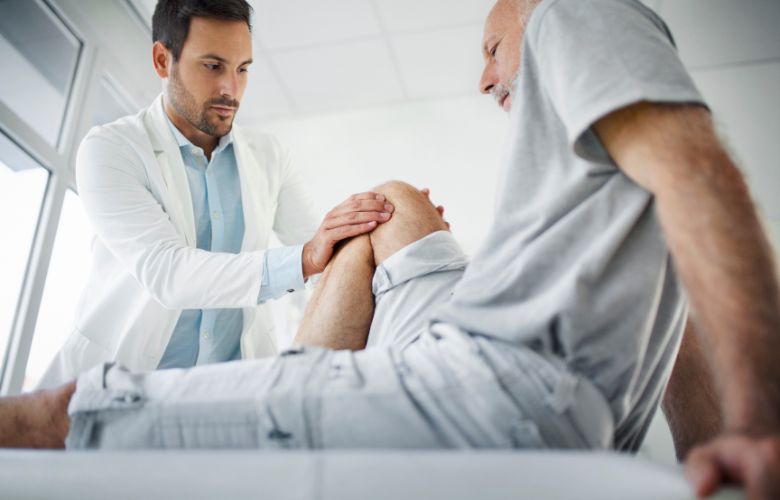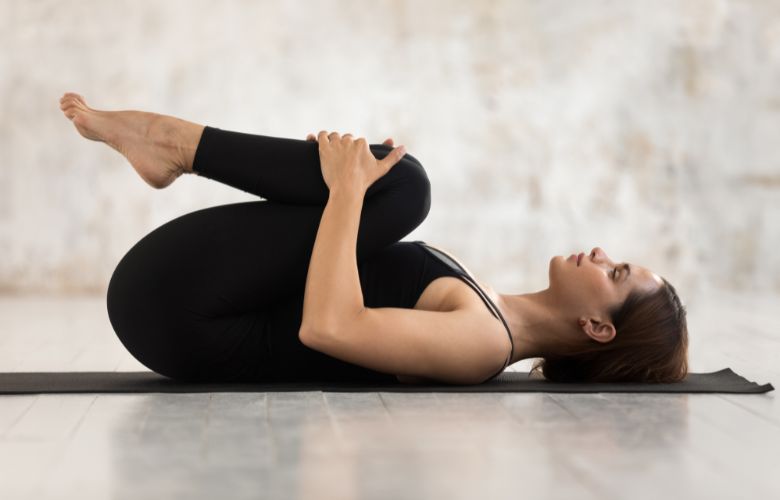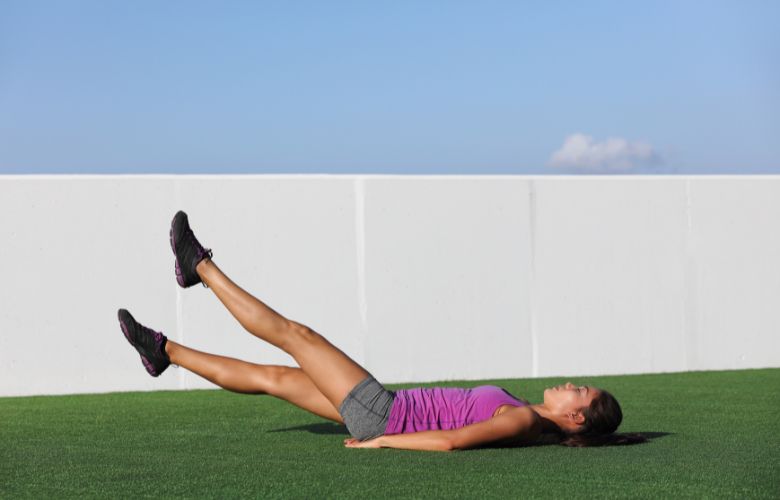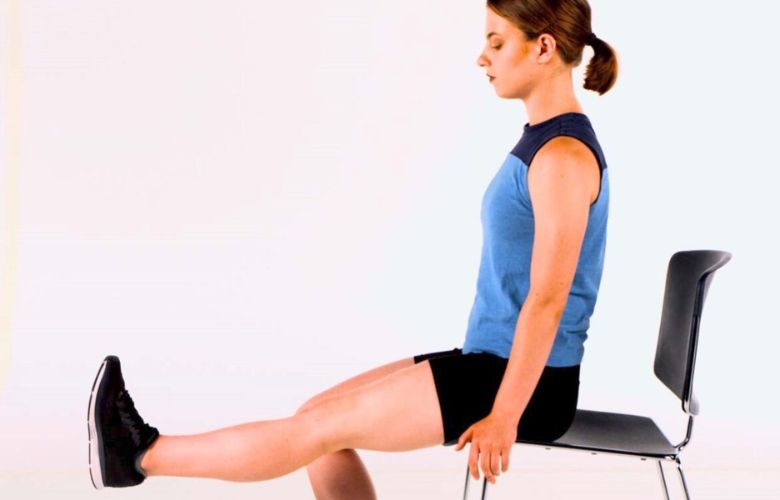Knee surgery is a significant medical treatment that has to be planned and prepared for with care. It is essential to take specific precautions both before and after surgery in order to guarantee a positive outcome. Patients should make sure they fully grasp the process before the operation, follow the preoperative instructions provided by their surgeon, and set up their house for postoperative recuperation. In addition, rehabilitation is an essential component of postoperative treatment, and patients should adhere to their rehabilitation program as prescribed by their doctor or physical therapist. This could entail strengthening and flexibility exercises as well as the use of aids like crutches or a knee brace. Also, patients must show up for follow-up meetings with their surgeons in order to track their development and handle any issues. To help them regain their strength and mobility, patients must properly care for their surgical wounds, control their pain and swelling, and adhere to their rehabilitation regimen. Patients can increase their chances of making a full recovery and regaining their quality of life by adhering to these recommendations.
Exercises Before The Surgery

Something that almost every knee surgeon in Melbourne is going to tell you when they schedule the surgery with you is that you should get as much exercise as possible before the procedure. In most cases, this can be quite complicated, since if you are getting surgery already, that means that you are not fit to exercise. But do not worry, as the exercises mentioned here are nothing too demanding.
These below-mentioned exercises typically involve moving your knee joint in a variety of different directions, such as bending and straightening your knee or rotating your foot inward and outward. Range of motion exercises can help reduce stiffness and pain in your knee joint, which can be especially helpful if you’re experiencing knee arthritis or another degenerative condition.
Thigh Squeezes

The exercise will help you build up your quadriceps muscle which attaches to the knee are thigh squeezes. It is a relatively simple exercise where you lie on your back. As you do, tighten the muscles in your thigh by pushing your knee downwards and holding It for a few seconds. If possible, you should perform two or three sets with around ten to fifteen repetitions. The quadriceps muscles, which are the broad muscles on the front of your thigh and are crucial for knee stability and function, can be strengthened with the aid of thigh squeezes.
For a number of reasons, strengthening the quadriceps muscles before knee surgery might be beneficial. First, having stronger muscles may assist the knee joint get greater support, improving overall knee stability and lowering the chance of problems both during and after surgery. Also, having stronger muscles could make it easier for you to carry out daily tasks like getting out of a chair or ascending stairs, which can be difficult following knee surgery.
Leg Raises

There are two ways that you can do leg raises. The first way is when you lay on your side, which is the way to build up your hip abductor muscles that stabilize your pelvis when you are walking or standing. It is done by laying on the side and then lifting your leg upwards.
Straight leg raises are done by doing the same while on your back. This way, you will be building up the quadriceps that we mentioned in thigh squeezes, as well as the hip flexor muscles. This exercise will help in recovery quite a lot. Two sets of ten repeats should suffice.
Knee Bending

During this exercise, you will be working on your hip external rotators, which are a part of the abductors. While sitting in a chair, bend your knee back as far as possible. Once you reach a comfortable distance, hold it for a few seconds. You can do two to three sets of this exercise.
Exercises that enhance knee flexibility and mobility before knee surgery include knee flexion exercises, commonly referred to as knee bending exercises. Actively bending your knee during knee bending exercises can assist to maintain or extend the knee joint’s range of motion.
To maximize your recovery after knee surgery, it’s crucial to keep your knee joint as mobile as possible before the procedure. By increasing the flexibility of the muscles, tendons, and ligaments that surround the knee joint, knee-bending exercises can help you accomplish this. Knee bending exercises can also assist to increase blood flow to the knee joint, which can speed up recovery and lower the chance of problems following surgery.
Chair Push Up

Chair push-ups, also known as chair squats or box squats, are a type of exercise that uses a chair to squat. This exercise is beneficial for those preparing for knee surgery as it helps strengthen the muscles around the knee joint.
Chair push-ups specifically target the quadriceps, the large muscles in the front of the thigh that help straighten the knee joint. Strengthening these muscles can improve knee stability and function. This can be especially important during the preoperative period when the affected knee experiences pain and weakness.
Additionally, chair push-ups can be a low-impact exercise that is less likely to cause additional stress and damage to the knee joints compared to high-impact exercises such as running and jumping. This makes chair push-ups a safe and effective exercise option for people with knee pain or injuries.
Lying Kicks

Lying kicks, also known as straight leg raises, are a useful exercise for people preparing for knee surgery. This exercise targets the quadriceps, the large muscle on the front of the thigh that straightens the knee joint.
Kicking while lying down strengthens these muscles, improves knee stability and function, and relieves pain and stiffness in the affected knee. Additionally, the prone kick may be a low-impact exercise that is less likely to cause additional stress and damage to the knee joint compared to high-impact exercises such as running and jumping.
To perform a lying kick, lie on your back with one leg straight and the other leg bent at the knee. Squeeze your extended leg muscles and lift them off the floor a few inches. Keep straight and point your toes toward the ceiling. Hold for a few seconds, then slowly lower your leg. Repeat a few times, then change legs and repeat.
⇒ Best Advice From Orthopedic Medicine For Your Joints Click Now
What To Do After The Surgery?

Knee surgery is a major medical procedure that requires proper care and attention in the postoperative period. Once you have gone through with the surgery, you will probably not feel any better at that very moment. However, if you follow the instructions that the orthopedic surgeon in Melbourne will give you, the recovery should go just fine. There are various things you can do during recovery, but we will prepare you for what you can expect in order to get the best recovery possible.
After surgery, it is important to take steps to promote healing, reduce pain and inflammation, and prevent complications. Depending on the type of knee surgery, recovery can take weeks or months. Therefore, it is important to strictly follow the surgeon’s postoperative instructions and play an active role in recovery. With that in mind, this article provides some general tips on what to do immediately after knee surgery to ensure a smooth and successful recovery.
Before You Leave The Hospital

Naturally, right after the procedure, you will be kept in the hospital so the surgeon can ensure that there is nothing wrong with the procedure. This can take quite some time, which is between 10 to 14 days before they decide to let you go from the hospital. It all depends on the speed of your recovery.
Before you leave the hospital after knee surgery, it’s important to ensure a safe and successful transition home. This includes understanding discharge instructions, arranging transportation, planning a recovery area, stockpiling necessary supplies, and scheduling follow-up appointments with the medical team. By carefully following these steps and closely following your medical team’s advice, you can ensure a smooth and successful recovery from knee surgery. Remember to take it easy and avoid strenuous exercise during
⇒ Everything You Need To Know About Modern Eye Surgery Click Here
What To Do After You Are Let Go From The Hospital?
After you are discharged from the hospital after knee surgery, it is important to follow your surgeon’s post-operative instructions closely to ensure a smooth and successful recovery. This includes treating pain and swelling and attending physical therapy appointments. , monitoring the incision for signs of infection, resting and avoiding strenuous activity, and being patient while your body heals. It can heal and restore strength, flexibility, and mobility to the affected joint.
Just like before the procedure, the surgeon will give you certain exercises that you should follow in order to make recovery not only fast but also as intended. If you experience some kind of swelling during activity, you should not panic about it, as it is quite normal and it can occur up to two weeks after the surgery.
When it comes to handling pain after surgery, you will be given some medications, and it is very important that you stick to the instructions that are given to you because taking more medication than intended can lead to adverse effects on your recovery.
Of course, one of the most important things when it comes to a good recovery is the food you eat. You may not feel like eating anything at first, but as time passes, you will develop an appetite. When you do, it is important that the food you eat is nutritious, and if you are not sure what is good for you, do not be afraid to consult the surgeon about your options.
⇒ Everything You Should Know Before Having A Knee Replacement Surgery Click Now
What Is The Best Food To Eat After Knee Surgery?

After knee surgery, it is important to maintain a healthy, balanced diet to support proper healing and recovery. Here are some recommended foods that are highly nutritious.
- Lean Protein : Protein is essential for repairing and rebuilding damaged tissues and muscles after surgery. Choosing a lean protein source will help you get the protein you need without adding excessive amounts of fat to your diet. can. Some good options include chicken, turkey, fish, lean beef, tofu, and eggs. These foods also provide important nutrients such as iron and vitamin B12, which are important for maintaining energy levels during recovery. We recommend aiming for at least 20-30 grams of protein per meal to aid in healing and recovery.
- Whole Grains: Whole grains are a rich source of dietary fiber, which helps in maintaining proper bowel movement after surgery. They are also a good source of B vitamins, which are important for energy metabolism. Examples of whole grains include whole-grain bread, brown rice, quinoa, and oats. Incorporating these foods into your diet can help maintain stable blood sugar levels, promote satiety, support a healthy weight, and aid in the healing process.
- Fruits and Vegetables: Fruits and vegetables are packed with vitamins, minerals, and antioxidants that help reduce inflammation, promote healing, and boost your immune system. Includes berries, citrus fruits, and cruciferous vegetables such as broccoli and cauliflower. These foods can be added to smoothies, salads, soups, or eaten as snacks throughout the day. Make sure you consume a variety of colors to ensure you are getting a variety of nutrients.
- Healthy Fats: The healthy fats found in nuts, seeds, avocados, and oily fish like salmon help reduce inflammation and promote heart health. This can be helpful if your appetite has decreased after surgery. Incorporating these foods into your diet can also help maintain healthy cholesterol levels and support brain function.
Drinking plenty of water and other sugar-free fluids after surgery is important to maintain hydration and support proper organ function. Avoid processed foods, sugary drinks, and saturated and trans fats. Avoid foods that contain a lot of These can cause inflammation and slow the healing process. If you have any dietary restrictions or concerns, please discuss them with your medical team or registered dietitian to create a personalized meal plan that meets your needs.
Final Word
In most situations, the best recovery is achieved through communication between the patient and the surgeon. Do not be afraid to ask any questions when it comes to your surgery. If you are curious about any lifestyle changes that you can implement in order to improve your recovery, immediately ask the surgeon about them. Everyone’s body is different, and sometimes you may need other instructions to recover properly.
After surgery, it is important to closely follow your surgeon’s postoperative instructions, manage pain and swelling, attend physical therapy, monitor the incision for signs of infection, and be patient while your body heals. Taking care of your recovery by following these steps can contribute to a smooth and successful recovery from knee surgery. Remember to stay in touch with your medical team. Don’t hesitate to ask for help or support if you need it.


